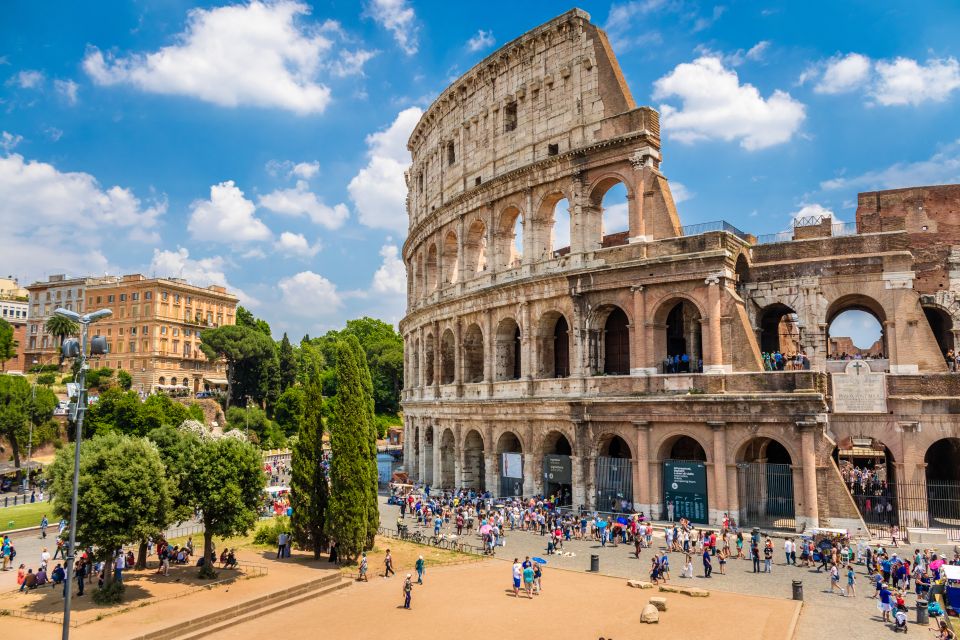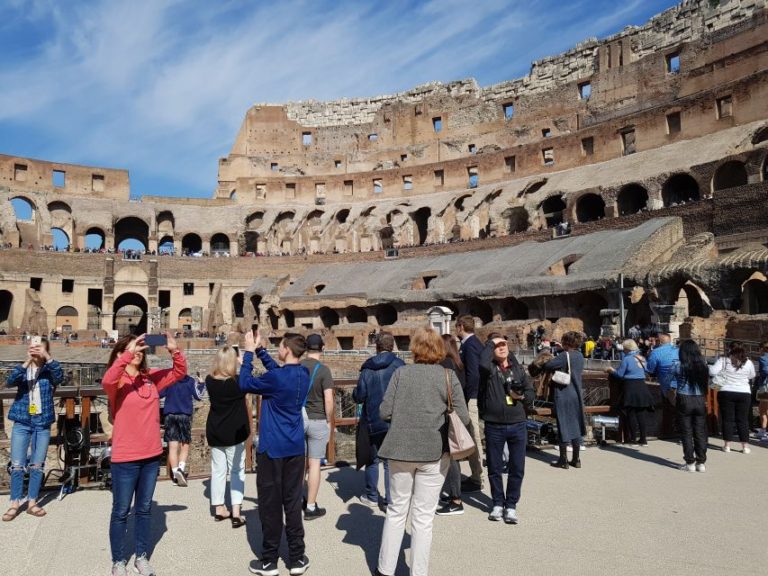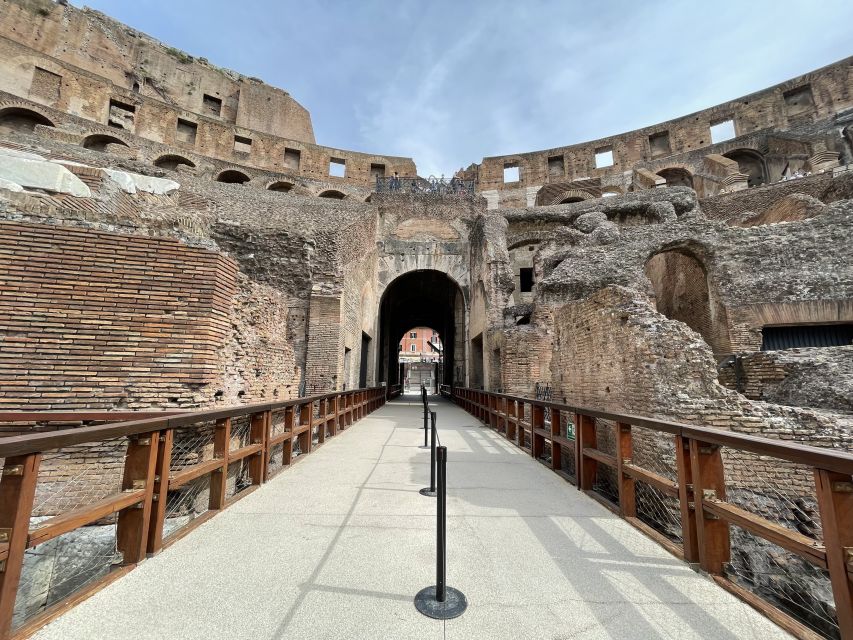About Colosseum
Colosseum Outer Wall
Your experience starts before you at any point set foot inside: the principal sight of the Colosseum is dependably unique. The disintegrating ruin of the south side gives way to the imperious gloriousness of the dazzling north side.
The elaborate design is 57 meters tall and constructed utilizing travertine marble obtained from quarries around Italy. It is practically customary to present joyously outside the Colosseum while visiting Rome – the photograph operation may be a platitude, yet it is a memory you will without a doubt cherish until the end of time.
The Outer Ring
The principal thing you’ll see when you draw nearer to the Colosseum is that it has different rings to help a seat. The excess part of the external ring will confront you as you leave the metro station and certainly places this structure into point of view. Three arrangements of curves stand on top of each other to shape the 159-foot-tall external ring.
Upon Completion
At the point when they finished the Colosseum, this ring surrounded the whole construction, however following 1,000 years without fixes or consideration it tumbled down in a tremor in 1349. There were 80 entrances that made up the external ring and every one of them had a number. Onlookers were allocated an entrance number to direct them to their seats.
It was an incredibly productive interaction that permitted the structure to totally top off and exhaust in the span of 15 minutes or somewhere in the vicinity. There were 76 numbered passageways for public use. The leftover four entryways were for various purposes and didn’t have numbers.
There were two passages for combatants to come in and out: The Libitinarian Gate, between numbers 57 and 58, which was for dead warriors. Between numbers 19 and 20 was where fighters would enter the design, in some cases called the Gate of Life. Roman Magistrates entered between entryways 38 and 39, which can, in any case, be seen today. The Emperor, Vestal Virgins, and Senators would enter between doors 76 and 1 — this entryway is currently the exit of the Colosseum.
The Base of The Colossal Statue of Nero
Right opposite the Colosseum metro station and before the actual Colosseum is the foundation of the Colossal Statue of Nero. It is mildly disappointing today, yet a significant component to pass by on your way in. You’ll see a plaque perusing “Region Del Basamento del Colosseo di Nerone.”
The Colossal Statue of Nero was a gigantic design that was deliberate, including the base, 106.5 Roman feet, as indicated by Pliny the Elder. That would be around 99 feet (30.3 meters) in the present estimations. It was implicit the similarity of Nero, essentially his face, until after his passing when it was changed to the resemblance of the sun god Sol.
You need to envision that this sculpture was practically the size of the Statue of Liberty, just 10 or so feet more limited. Assembled and developed with no of the apparatus used to build our Lady Liberty in the late modern transformation.
An extraordinary model is that the sculpture was moved after Nero’s demise to just external the Colosseum, and old scholars said it took exactly 40 elephants to ship the design. The last notice of it in history was in the late fourth 100 years before it disappeared like a phantom. Today, the sum total of what we have is a piece of the base with trees outgrowing it. An extraordinary spot to chill out and partake in the shade.
The Arch of Constantine
Flavius Valerius Constantinus, or Constantine the Great to the vast majority of us, was the primary Christian Emperor of Rome. A victorious curve was fabricated and committed to him for his triumph over Maxentius at the Battle of Milvian Bridge in A.D. 312. It’s a legendary curve directly before the Colosseum.
It sits in the Piazza del Colosseo, adjoining the huge amphitheater, and required around two years to build — which is a record speed! The engineer took a few artistic freedoms by getting from a portion of the sculptures of neighboring curves, sanctuaries, and designs to enhance Constantine’s curve.
It is the biggest Roman curve and one of just three excess curves in Rome. There were 36 victorious curves by the fourth century A.D., only three of which have made due.
Flavian Amphitheater Plaque
The Colosseum is, as a matter of fact, just a moniker for the construction. The genuine name of the structure is the Flavian Amphitheater, named after the line that assembled it. See the plaque connected to the center ring of the Colosseum straightforwardly confronting the Temple of Venus.
The plaque has the name of the design, Amphitheater Flavium, and the names of a couple of popes who were fundamental in protecting the structure.
The Second Floor Balcony
When out of the snack bar region, peer down at the focal point of the Colosseum and head in a clockwise bearing. At the point when you get to the zenith of the circle, you’ll find a magnificent overhang where you can snap an image. Peer down to one side and you’ll see a remaking of a portion of the first seats of the Colosseum.
The levels of the Colosseum were coordinated by class and social standing, which was a qualification by birth. The Emperor sat at the primary level clearly and he had his own platform, similar to in “Combatant”. On a similar level sat the vestal virgins, congresspersons, and officers.
The values of knights sat in the subsequent level. They were of a comparable social class as legislators, yet military in nature. These were individuals who lounged around the second-floor gallery where you get yourself now.
You can find more about the Colosseum’s set of experiences while appreciating the old curios uncovered during archeological digs.
Ludus Magnus
Only opposite the Colosseum on Via di San Giovanni in Laterano are the remaining parts of the Ludus Magnus — the nearest and most noteworthy combatant preparation school in the domain. It has numerous cells for slaves and, surprisingly, an underground passage straightforwardly associated with the Colosseum.
The Ludus was worked by Emperor Domitian. Soon after the Colosseum was done in A.D. 82 (with a delicate opening in A.D. 80), they probably acknowledged there were some store network issues with extraordinary warriors, so Domitian chose to willingly volunteer to redress what is happening.
The school went through redesigns and enhancements, yet it was pretty utilized for more than 200 years. Warriors came from across the realm to prepare, as free people or slaves, in what was the Harvard of fighter schools — the Ludus Magnus.
The word ludi could be utilized to allude to the games and preparing no different either way. When you entered a Ludus, your essential range of abilities would be picked and you’d be prepared by a lanista. The word warrior was one explicit sort of contender that battled with a short blade known as the gladius. This was advocated by the film “Fighter” featuring Russel Crow, which is conceivably the best film at any point delivered.
Arena
The Arena of the Colosseum was once a stage of combat for the gladiators. Additionally, it also held mock naval battles. It had a massive number of about 80,000 seats at the stadium, which inspired the gladiators to fight for their freedom. These warriors of the Colosseum were mostly slaves, criminals, or prisoners of war. We are bewildered from our imagination by the loud cheer of the blood-thirsty crowd of thousands. All excited to see the gladiators fight for their lives.
Entering the field is both a spectacular and chilling experience. Standing where so much blood has been shed and a large number of lives have been lost is sinking. It is not difficult to imagine a period millennia in the past when individuals were battling for their lives on wooden floors layered with sand, under the watch of furious onlookers.
Gate of Death
No visit to the Colosseum is finished without strolling through the Gate of Death — or all the more officially, the Libitinarian Gate. Assuming you approach the field floor, you will stroll through the Gate of Death. The fairly abhorrent reason for this entryway was to ship the dead assemblages of crushed fighters and executed detainees out of the field.
The Gate of Life was situated on the contradicting eastern side. This is where the warriors would enter the field before a fight.
Underground (The Hypogeum)
The most strange and intriguing piece of the Colosseum is, without uncertainty, the Hypogeum, also called the Colosseum Underground. For quite a long time, archeologists stayed away from the maze of passages because of its sheer intricacy, and it has just been completely opened to guests in 2021.
The Underground is one of the most exclusive access zones in the Colosseum. It a space below the arena floor where gladiators would wait, only to be eventually hoisted onto the floor one by one. It is also the area where wild creature (the opponents of gladiators) were kept chained up.
You can see recently covered-up insider facts while meandering the Hypogeum; like the hidden entrances used to raise lions and different hunters into the field from beneath.
The Cross
In the year 2000, the Colosseum set a cross in memory of the multitude of Christian saints that the Romans killed inside the Colosseum. While it is practically unmistakable that Christians kicked the bucket inside the Colosseum, it is questionable whether they passed on in light of the fact that they were Christian.



